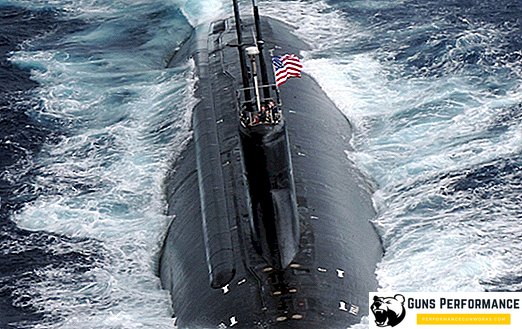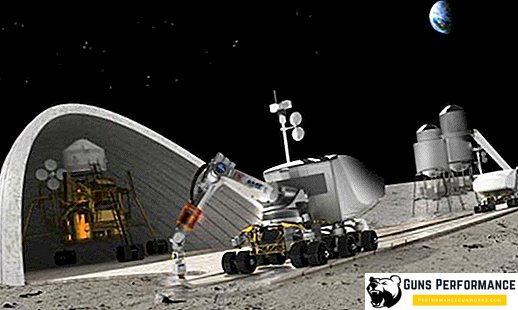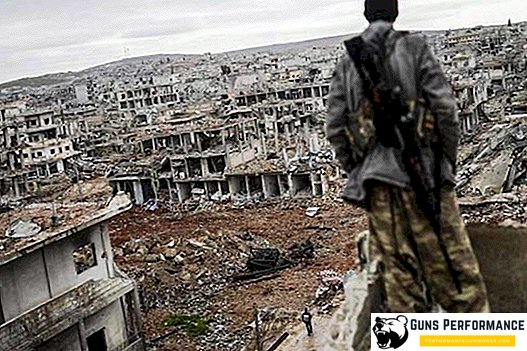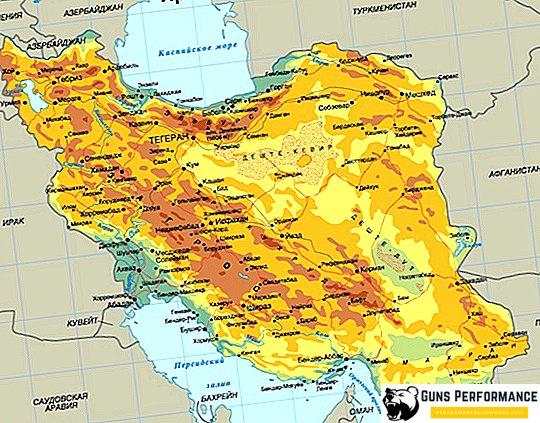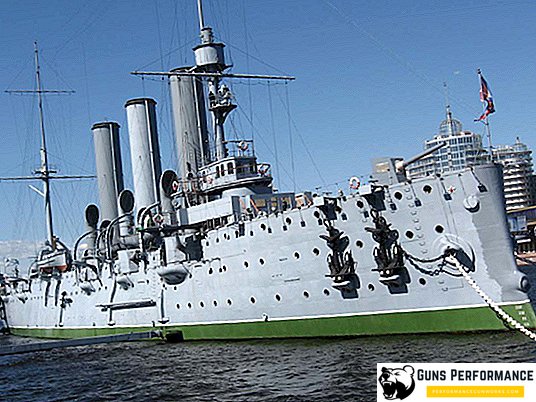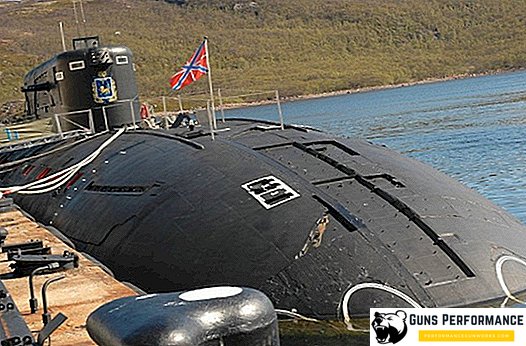BA-10 - Soviet armored transport of the middle class. Produced in the 30s of the last century. Passed through the entire Great Patriotic War and through the battles with Japan in the late summer of the 45th. In total, slightly less than 3.5 thousand copies left the assembly line.
General information about the armored car BA-10
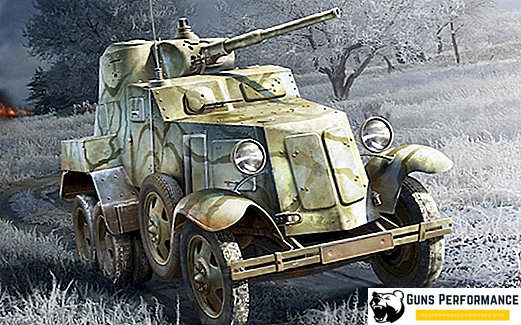
The 10th model was developed by the specialists of the Izhora plant in 1938. She was a follower of BA-6. The basis of the new car was the GAZ-AAA chassis. To increase the terrain, the crew could quickly put track chains on the rear wheels. Overcoming of deep irregularities was carried out at the expense of spare wheels (one on each side).
Body by welding collected from armored sheets. Those elements (outside and inside) for which welding was not used were fastened with special rivets and bolts of increased strength. Brackets were used to connect the frame and housing. Some copies on board had equipment for communication.
History of BA-10

The path begins in 1927 with the release of technical documents of the BA-27 armored car. Initially, AMO-F-15 chassis was used for the base, but then it was replaced with Ford-AA (the best option in those years). Under the hood installed gasoline engine with four cylinders. He developed up to 50 horsepower. Cooled by a fluid system.
The main disadvantage of technology was considered weak firepower. The 37mm cannon showed zero effectiveness against enemy tanks. The maximum that was enough firepower, the defeat of armor with a thickness of up to 12 millimeters.
In the 34th year, the military leadership reconciled with the lack of benefit from the 27th model. In the same year, engineers began developing a new machine, the BA-3. Former armament replaced the turret from the tank T-26. Starting speed and penetration are better. Thanks to an improved aiming mechanism, the accuracy of the fire increased.
In 1935, the company engaged in the release of GAZ-AAA, as well as the assembly of the armored car BA-6. A year later, an upgraded version of the "six" appeared, which received an index of "M". In 1938, the designers came to the best option - the BA-10 armored vehicle. They took GAZ-AAA chassis as the basis, but with a frame shortened by 60 centimeters.
Design and technical characteristics of BA-10

Specifications:
- Weight - 5 100 kg;
- Length - 4.7 m;
- Width - 2.1 m;
- Height - 2.2 m;
- Capacity - up to 4 people;
- Power unit power - 50 horsepower;
- Highway speed (maximum) - 53 km / h;
- Movement without refueling - 260-300 km.
Body of armored vehicle BA-10

Rolled steel sheets used to assemble the hull. They are interconnected by welding. Thickness varied depending on the part of the body:
- The lower part - 4-6 millimeters;
- The main part - 8-9 millimeters;
- Frontal part and the tower - 10 millimeters.
Sheets are placed at different angles to improve bullet resistance. Separate protection set for fuel tanks.
In the middle part on each board placed rectangular doors for loading and unloading the composition. Small observation windows were installed on each door. In combat conditions, they were closed with armored valves with small slits for inspecting the area. The hinges were inside.

The management compartment was located behind the engine compartment. On the left was the driver's seat, on the right - the arrow. The shooter controlled the machine gun mounted in the ball mount. The windshield, designed for the driver, was protected by an armored flap with a viewing slot.
The combat compartment was located behind the cab. Its roof was made lower to reduce the overall height of the BA-10 armored car. The conical tower rotated in a circle. Above there was a hatch, reclining forward. It was used to inspect the environment (not in combat conditions) and for landing and disembarking. In conditions of military operations, the shooter used small gaps protected by armored shutters for the review.
Armament

The fire on opponents was carried out using a 45-mm cannon 20K and 7.62-mm machine gun DT. Vertical guidance of both guns - from -20 to +20 degrees. For the turn of the tower answered shooter. He used a manual drive. The aiming on the target was carried out with the help of telescopic and periscopic panoramic sights.
Engine compartment

Located in front of the cabin. Under the hood, engineers installed a gasoline engine with four carburetor type cylinders. Volume - 3.28 liters. Cooling was carried out using a liquid system. Power - 50 horsepower at 2.2 thousand revolutions. Power provided acceleration to 53 km / h on the highway. Full refueling was enough for 260-300 kilometers (depended on road conditions).
The transmission of the BA-10 armored car had a characteristic structure for that time. Dry clutch with a single disc, manual transmission (4 + 1), a multiple ratio, drive and main drive and mechanical brake mechanism. From the brakes on the front wheels refused. Instead, they introduced a central brake in the transmission in the design.
The hood was made from sheets of rolled steel. To access the equipment to the power unit and other technical units, the hood was folded forward. It was attached to the roof with reinforced hinges. Also on the sides there were hatches for quick access to the engine compartment.
The radiator is located in front of the power plant. Before him set V-shaped armor for protection. It was equipped with movable flaps, with which the technician could adjust the air supply. Cooling and ventilation also contributed slit blinds, located on the sides of the engine compartment.
Hodovka

It consisted of three axles, wheel formula - 6x4. To enhance the front beam installed hydraulic shock absorbers. Semi-elliptical leaf springs have been added to the rear suspension device to increase strength.
GK tires had a size of 6.50-20. The front axle was equipped with single wheels. For leading rear axles used dual. Also present was an additional freely rotating axle with spare wheels. It was located in the lower part of the sides of the engine compartment. The additional axle helped to overcome various indentations, not allowing the car to "sit down" on the bottom. Characteristics enough to overcome the 24-degree slopes.
To improve the cross-country ability of the BA-10 off-road armored vehicle, the crew could quickly put on the track chains on the rear driving axles. The wheels of the front axle are protected by streamlined wings. On the rear axles set flat wings. Such a constructional solution made it possible to add boxes for storing spare parts and the necessary tools to the device.
The rest of the equipment
For movement at night used headlights. They were installed in armored cabinets and fastened with brackets. Some copies on board had a radio station. Communication between members of the combat structure was carried out using the intercom. Shielded electrical equipment promoted uninterrupted communications.
BA-10 M
At the end of the 39th year of the last century, the design bureau of the Izhora Works prepared documentation for an improved model, which received an "M" index. The volume of each fuel tank increased to 54.5 liters. Petrol lines protected armored strips to increase the survivability of technology. Reservation machine gun installation changed, the rotational mechanism of the tower improved. The remaining changes are unimportant. The weight of the car increased by 400 kilograms, but this did not affect the traction performance.
Use of BA-10 in military conflicts
The first practical application was in 1939 in a battle by the Halkin-Gol River. In subsequent years, the technique used for the liberation of Poland and the war with Finland. The main part of the copies was used until 1944. In some units, armored cars of the middle class were used before the end of the Second World War. In some cases, the BA-10 armored car was used not only for reconnaissance and protection, but also to fight enemy tank detachments.
In 1940, the Finns seized several copies, which were later used to solve their own combat missions. Finnish engineers replaced Soviet powerplants with Ford eight-cylinder engines. They developed up to 85 horsepower. Three cars sold to the Swedish army. German soldiers also captured several models that were used in the future by some infantry squads, military police and educational institutions.
What can be concluded?

The armored vehicle BA-10 was useful for the Soviet army during the Great Patriotic War. Vehicles served as the basis for the development of future generations of armored cars of the middle and light classes.
According to official data, of 3.5 thousand assembled cars, four survived. They can be found in the tank museum in Finland, in Ukraine in the Poltava region at the site of the death of M. P. Kirponos, in a private collection in the Moscow region and in the Museum of the Military Glory of the Urals in Upper Pyshma.


